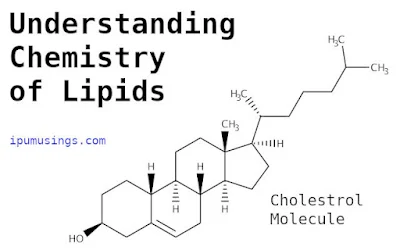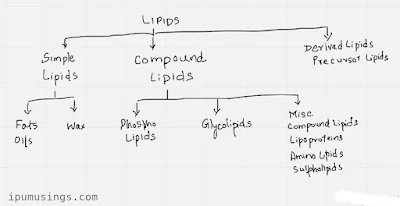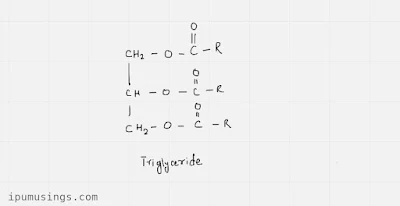Understanding Chemistry of Lipids #biochemistry #lipids
Understanding Chemistry of Lipids
Author: Tanuj Handa
What are Lipids?
Bloor defines lipids as a collection of naturally existing molecules that include higher fatty acids, their naturally occurring compounds, and substances found in natural connection with them. It encompasses a vast range of compounds with various architectures.
Lipids are a heterogeneous collection of organic chemicals that are insoluble in water (polar solvents) but soluble in non-polar organic solvents such as ether, benzene, alcohol, and chloroform.
Exception: Glycerol is water-soluble. It is an intermediate in carbohydrate and lipid metabolism.
Exception: lipoproteins are water-soluble, and classified as conjugate lipids.
What are the biological functions of Lipids?
Lipids have several important biological functions such as:
1. Reservoir of energy: Calorific value is 9kcal/gm, Can be stored in anhydrous concentrated form.
2. Structural components of cell membranes (Remember Membrane Biogenesis)
3. Protective coating on the surface of many organs such as kidneys, hence protecting against injury. (adipose tissues, triglycerides)
4. facilitate the absorption of the fat-soluble vitamins A, D, E and K.
5. Dietary forms: butter, oils, nuts etc.
6. Hormones are derivatives of fatty acids (e.g. prostaglandins)
Classification of Lipids
Based on composition, lipids are classified as:
1. Simple lipids
2. Compound lipids
3. Derived lipids and Precursor lipids
1. Simple Lipids
They are esters of fatty acids with various alcohols. They do not contain any conjugate groups.
Simple lipids are further classified as:
a) Fats or oils
b) Waxes
a) Fats or Oils
If the fat is liquid at the ordinary temperature it is called an oil. Triglycerides are given by the formula:
Naturally occurring fats and oils are mixtures of acylglycerols, triacylglycerol being the most abundant component.
Fats are solid at room temperature and oils are liquid at room temperature.
e.g.: Vegetable oils, Fish liver oils, Butter, Ghee etc.
b) Waxes
Waxes are esters of fatty acids with higher (monohydric long-chain) alcohols. e.g. Beeswax
2. Complex (or compound) lipids
These lipids contain conjugate compounds in addition to fatty acids & alcohols. The conjugate group can be a phosphate group, carbohydrates, proteins etc.
Compound lipids include phospholipids, glycolipids, sulpholipids, amino lipids etc.
ⅰ Phospholipids Glycerol + Fatty acids lipids + Phosphate
ⅱ Sphingomyelins Sphingosine + Fatty acid + Phosphate + Choline
ⅲ Cerebrosedes (glycolipids) Sphingosine + Fatty acid + Simple sugar(s)
ⅳ Gangliosides (glycolipids) Sphingosine + Fatty acid + 2-6 simple sugars one of which is sialic acid
3. Derived lipids and Precursor lipids
Derived lipids and precursor lipids are the products or precursors of simple lipids and compound lipids.
Examples: Fatty acids, cholesterol, steroid hormones, fatty alcohols, ketone bodies, prostaglandins, fat-soluble vitamins (A, D, E, K) etc.
Nearly 60% of lipids in the brain and most of the membrane lipids are compound lipids.
👉See Also:







